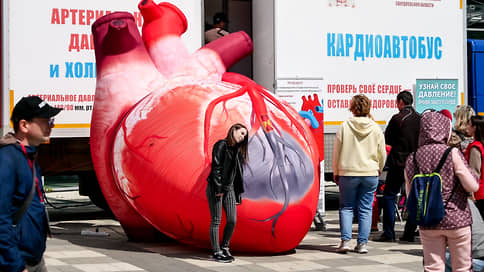Experts evaluated economic damage from cardiovascular diseases

The total economic burden from coronary heart disease, including myocardial infarction, is more than 2.14 trillion rubles, of which 393 billion rubles are 393 billion, and ischemic strokes – 487.67 billion rubles. Such data was presented by the head of the Center for Expertise and Quality Control of Medical Assistance of the Ministry of Health Vladimir Omelianovsky. He noted that in order to reduce this burden, more attention should be paid to prevention, access to modern technologies and drugs.
The Director General of the Federal State Budgetary Institution “Center for Expertise and Quality of Medical Assistance” of the Ministry of Health Vladimir Omelianovsky presented on the environment an assessment of economic damage, which is applied to the state of cardiovascular diseases (SVA). He explained that the incidence primarily entails direct medical expenses for outpatient treatment, ambulance, hospitalization, rehabilitation and preferential drug support. In addition, disability forms non -medical costs. These are also temporary disability payments and other social support measures financed by the state. Finally, mortality from the CVD is direct economic losses, primarily for the country’s GDP.
According to Vladimir Omelianovsky, the total economic burden from coronary heart disease, including myocardial infarction, is more than 2.14 trillion rubles: medical costs – 185.6 billion rubles, social costs – 92.4 billion rubles, costs due to loss of performance – 1.87 trillion rubles.
The total economic burden from myocardial infarction is 393 billion rubles: medical costs – 43.42 billion rubles, social costs – 6.45 billion rubles, costs due to loss of performance – 343.15 billion rubles. The total economic burden from the ischemic stroke is 487.67 billion rubles: medical costs – 101.37 billion rubles, social costs – 9 billion rubles, costs due to loss of performance – 377.31 billion rubles.
Vladimir Omelianovsky called the risk factors for the development of SVD, hypertension, high cholesterol (dyslipidemia), diabetes, smoking, overweight, low physical activity. He emphasized part of them, it can be affected by behaviorally, to the part – medication: “We can calculate how each of these factors affects, for example, to mortality, to significantly reduce the burden of the disease and prevent the onset of severe complications.” For clarity, he presented the calculations of damage to GDP caused by an increased level of “bad cholesterol” (see table).
“Unfortunately, the readiness of systems – not only our, but also many other countries – to invest in long -term effects remains low,” Mr. Omelianovsky notes. “We are too often focusing on short -term expenses, forgetting that prevention, access to modern technologies and drugs are investments that pay off.”
The Deputy General Director of Scientific and Analytic work and preventive cardiology of the Federal State Budgetary Institution “NMIC Cardiology named after Academician Chazov” by the Ministry of Health of Russia Nana Pogosova referred to data from epidemiological studies, according to which lipid metabolism, that is, a high level of cholesterol, are detected in 60–65% of the adult. About a third of such patients have an increased level of triglycerides – another important, but underestimated, according to her, risk factor.
“Even during the medical examination and preventive examinations, we identify groups of people without clinically expressed diseases, but with already impaired lipid exchange. These are formally healthy people, but they are already at risk and need early intervention. If you do nothing, after a few years they will replenish the ranks of patients with serious cardiovascular problems, ”she explained.
First of all, it is important to provide patients with the most effective drugs to control lipid metabolism – these are drugs from the PCSK9 inhibitors group, the so -called kumabs, says Nana Pogosova. “Unfortunately, not all drugs of this group are included in the list of preferential support. We consistently advocate their inclusion, as well as to ensure access to other important drugs, in particular, omega-3 fatty acids, which are effective for hyperttrimglyceridemia. This is especially important for patients with concomitant chronic kidney diseases, which often complicates the course of coronary heart disease and diabetes, increasing risks and mortality. Yes, this will require additional expenses. But this is investment, not spending. We can calculate: if you invest a certain amount in the expansion of the preferential support, what savings this will give by reducing the number of heart attacks, strokes, hospitalizations and deaths, ”she notes.
The co -chair of the All -Russian Union of Patients Yuri Zhulev supports the idea of including all drugs provided for by current clinical recommendations in the preferential drug support, their execution should be controlled by the Ministry of Health and Insurance companies. Special attention, in his opinion, should be paid to the detection of patients with dyslipidemia during medical examinations and preventive examinations, especially in labor collectives, in addition, it is necessary to actively work with youth in social networks, explaining the risks associated with high cholesterol, and motivating to monitor their health and the health of parents and close relatives, “only this approach will make it possible to real Reduce mortality and maintain the health of millions of Russians. ”








